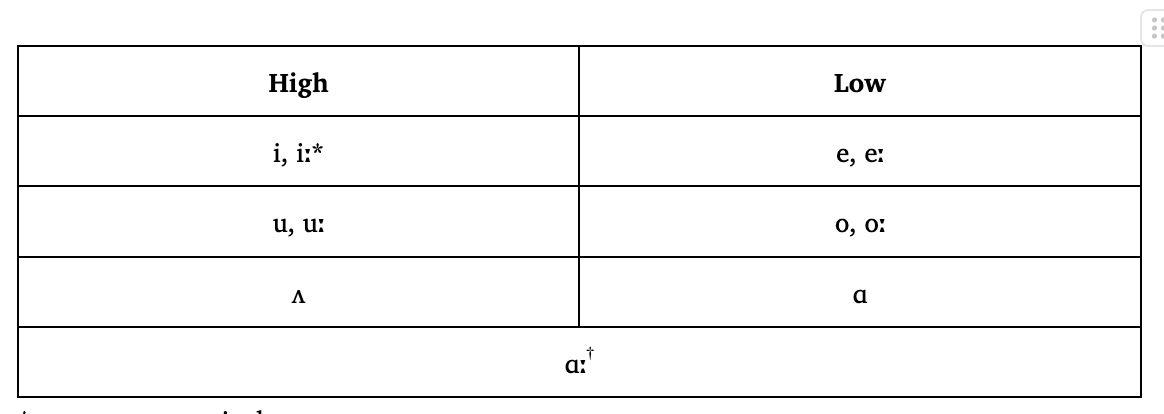Creating a Fictional Language Family Part 3: Evolving Vowel Harmony in Language 1a
In language 1a, emphasis causes the lowering of vowels. The emphatic vowel [iˤ] goes to [eˤ], the emphatic vowel [uˤ] goes to [oˤ], and the emphatic vowel [aˤ] goes to [ɑˤ]. Unemphatic [a] goes to [ʌ] when short, but it goes to [ɑː] when long. This makes [ɑː] a neutral vowel, and, interestingly, means it’s transparent to vowel harmony – an unusual characteristic for a long low vowel, but one that makes sense given the background history. This leaves us with a system that looks like this:
*opaque progressively
†sometimes transparent bidirectionally
But wait! There’s a twist!
See, emphasis doesn’t just alter vowel quality – it can alter consonant quality too. Emphatic /kˤ/ often goes to /q/, and it wouldn’t be a stretch to say that this would impact other velar consonants. If this change occurs after emphasis harmony is established, it could create a velar-uvular consonant harmony system:
proto xaːkˤ > xˤaˤːkˤ > modern χaːq
proto xaːk > modern xaːk
Velar-uvular consonant harmony isn’t common, but it does occur in some Totonacan languages. But what we have here isn’t just velar-uvular consonant harmony – it’s a system of consonant-vowel harmony. Uvulars only occur in words with low vowels, and velars only occur in words with high vowels. This sort of harmony, “faucal harmony”, is very rare, though it occurs in Interior Salish. However, emphasis harmony leaves behind an interesting and (as far as I know) unprecedented property: faucal harmony can occur in words without any uvulars in the stem.
proto tˤuv > tˤuˤv > modern tov
proto tˤuv-ik > tˤuˤvˤ-iˤkˤ > modern tov-eq
References
https://escholarship.org/content/qt2qs7r1mw/qt2qs7r1mw_noSplash_f88393aae095900d6bc9c2119c505c96.pdf, pgs. 70-71
